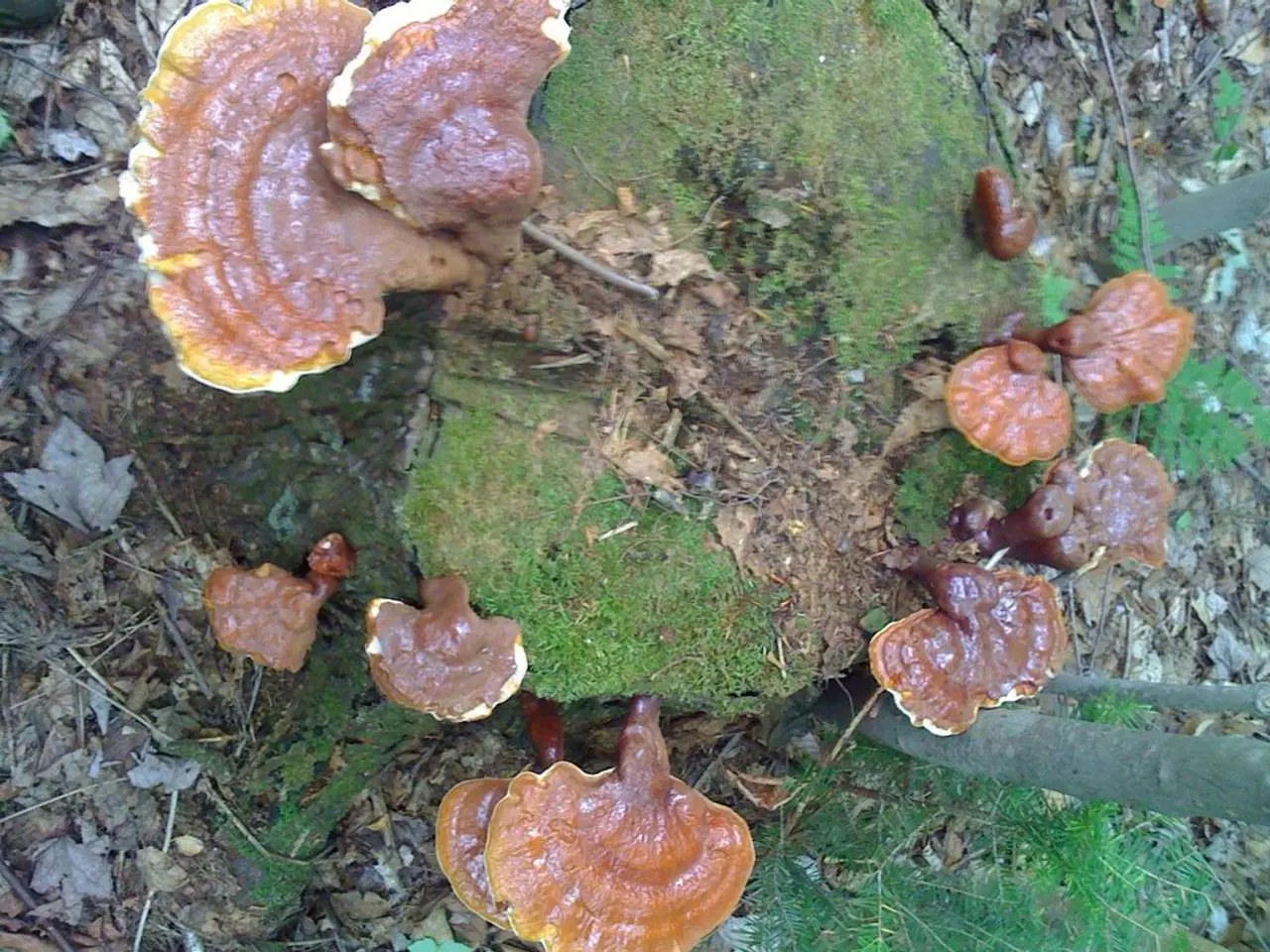Mushroom growth on your lawn: an explanation
Managing Mushrooms in Your Lawn: A Guide for Homeowners
Mushrooms are a common sight in many lawns, often growing due to excess moisture, decaying organic material, shade, and poor soil drainage [1][3][4]. While they can be a sign of a healthy soil environment, an abundance of mushrooms may also indicate problems like overwatering or drainage issues.
Here's a guide to safely remove mushrooms and prevent their recurring growth:
- Reduce moisture: Avoid overwatering and improve soil drainage to limit the damp conditions mushrooms need [1][4][5].
- Remove organic debris: Regularly rake and clear away dead grass, leaves, and wood chips, which act as fungal food sources [1][5].
- Improve sunlight exposure: Trim trees or shrubs to reduce shade, making conditions less favorable for fungal growth [1][5].
- Maintain lawn health:
- Follow a proper fertilization schedule to strengthen grass so it can outcompete fungi, using balanced and high-nitrogen fertilizers in spring/summer and high-potassium in fall to promote resilient roots [5].
- Mow regularly to keep grass dense and healthy [5].
- Physically remove mushrooms: Pick or mow mushrooms as soon as they appear to prevent spore release, but note this does not eliminate the underground fungal network [5].
- Aerate soil to improve drainage and airflow, reducing favorable conditions for fungi [5][2].
Toxic species like false parasols (Chlorophyllum molybdites), common in lawns, can pose a risk if ingested by pets or children, so physical removal is also a safety measure [3].
It's essential to remember that many mushrooms are toxic to dogs, so it's best to assume they are poisonous unless identified otherwise, especially in the UK [6]. Symptoms of mushroom poisoning in dogs include excessive salivation, vomiting, diarrhea, loss of balance, and seizures [7].
Scarifying and aerating the area and oversowing with grass seed can help remove fairy rings from a lawn, but the fungi living below the soil surface will likely cause the rings to return [8]. Eating mushrooms is generally unsafe unless they have been identified as safe by a recognized expert [9].
Fungi live below ground in the soil and produce spores. Mushrooms and toadstools help increase fungal populations when they throw up their fruiting bodies [10].
By following these practices, you can create a less welcoming environment for fungi, promoting a healthier and more manageable lawn. Chemical fungicides are generally not recommended for lawn mushrooms as they target mushrooms' visible parts rather than the underlying mycelium and may not be effective [5].
References:
[1] Lawn Care for a Beautiful Yard. (2021). Lawn Care for a Beautiful Yard. Retrieved 18 May 2023, from https://www.gardeningknowhow.com/lawn-care/lawn-care-maintenance/lawn-care-tips.htm
[2] Aeration. (2021). Lawn Care for a Beautiful Yard. Retrieved 18 May 2023, from https://www.gardeningknowhow.com/lawn-care/lawn-care-maintenance/core-aeration.htm
[3] Common Mushrooms and Toadstools. (2021). University of Illinois Extension. Retrieved 18 May 2023, from https://web.extension.illinois.edu/cfivt/yardandgarden/articles/common_mushrooms_and_toadstools.cfm
[4] Watering Lawns. (2021). Lawn Care for a Beautiful Yard. Retrieved 18 May 2023, from https://www.gardeningknowhow.com/lawn-care/lawn-care-maintenance/watering-lawns.htm
[5] Mushrooms in the Lawn. (2021). Lawn Care for a Beautiful Yard. Retrieved 18 May 2023, from https://www.gardeningknowhow.com/lawn-care/problems/mushrooms-in-the-lawn.htm
[6] Poisonous Mushrooms. (2021). Blue Cross for Pets. Retrieved 18 May 2023, from https://www.bluecross.org.uk/pet-advice/poisonous-mushrooms
[7] Mushroom Poisoning in Dogs. (2021). PetMD. Retrieved 18 May 2023, from https://www.petmd.com/dog/conditions/digestive/c_dg_mushroom_poisoning
[8] Fairy Ring Control. (2021). Lawn Care for a Beautiful Yard. Retrieved 18 May 2023, from https://www.gardeningknowhow.com/lawn-care/problems/fairy-ring-control.htm
[9] Eating Wild Mushrooms: What You Need to Know. (2021). Mayo Clinic. Retrieved 18 May 2023, from https://www.mayoclinic.org/healthy-lifestyle/nutrition-and-healthy-eating/in-depth/mushrooms/art-20047625
[10] Fungi: The Unseen Life of the Soil. (2021). National Geographic. Retrieved 18 May 2023, from https://www.nationalgeographic.org/encyclopedia/fungi/
Controlling mushroom growth isn't just useful for a healthy lawn, it also benefits other aspects of a home-and-garden lifestyle by keeping the home environment clean and safe. Regularly maintaining and raking your home's lawn to reduce organic debris and improve sunlight exposure can help manage the growth of fungi such as mushrooms, contributing to a vibrant and thriving home-and-garden environment. Additionally, with many mushrooms being toxic to dogs, maintaining a mushroom-free lawn becomes essential for pet safety, making conscious gardening a part of a responsible pet ownership lifestyle.




